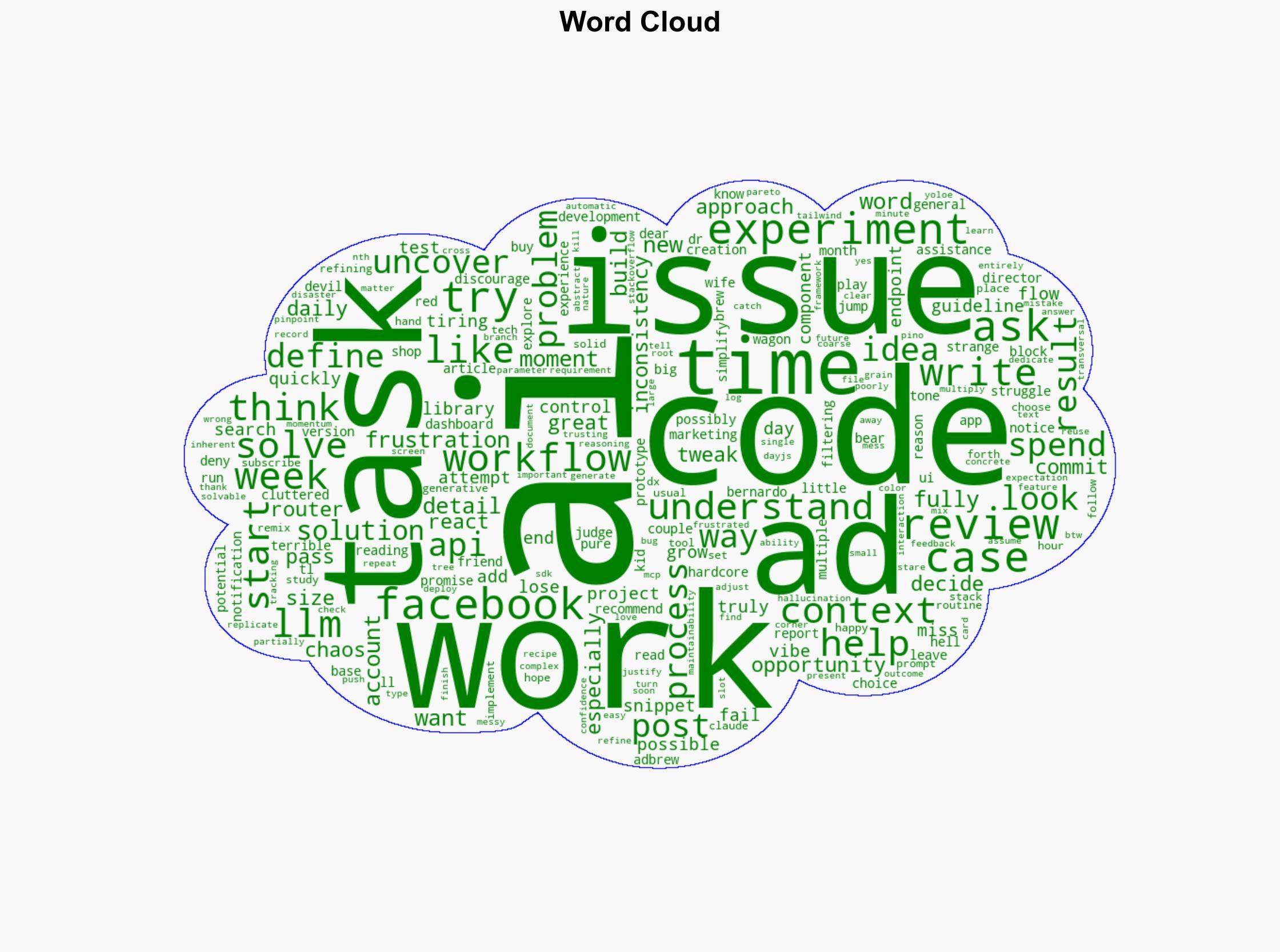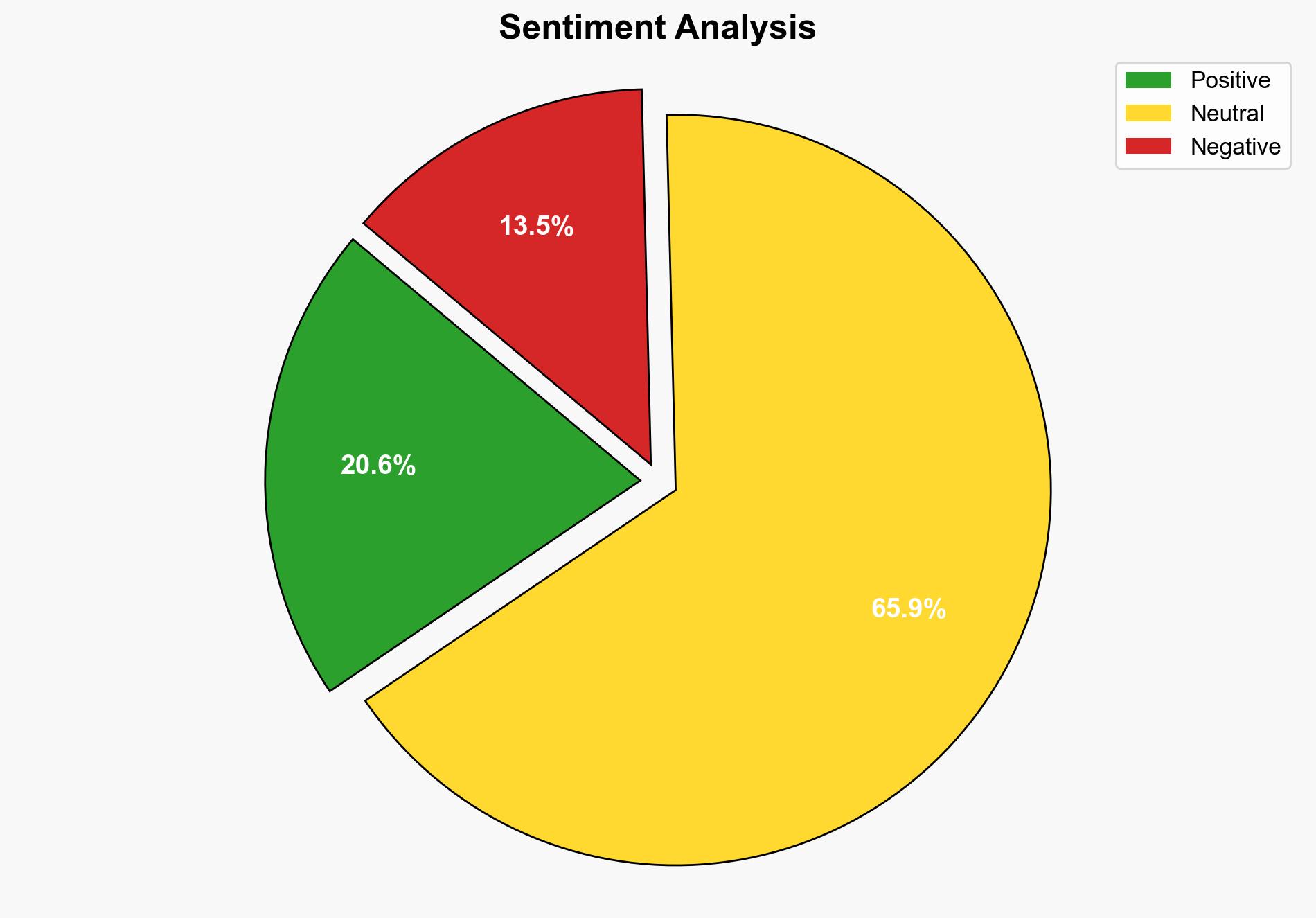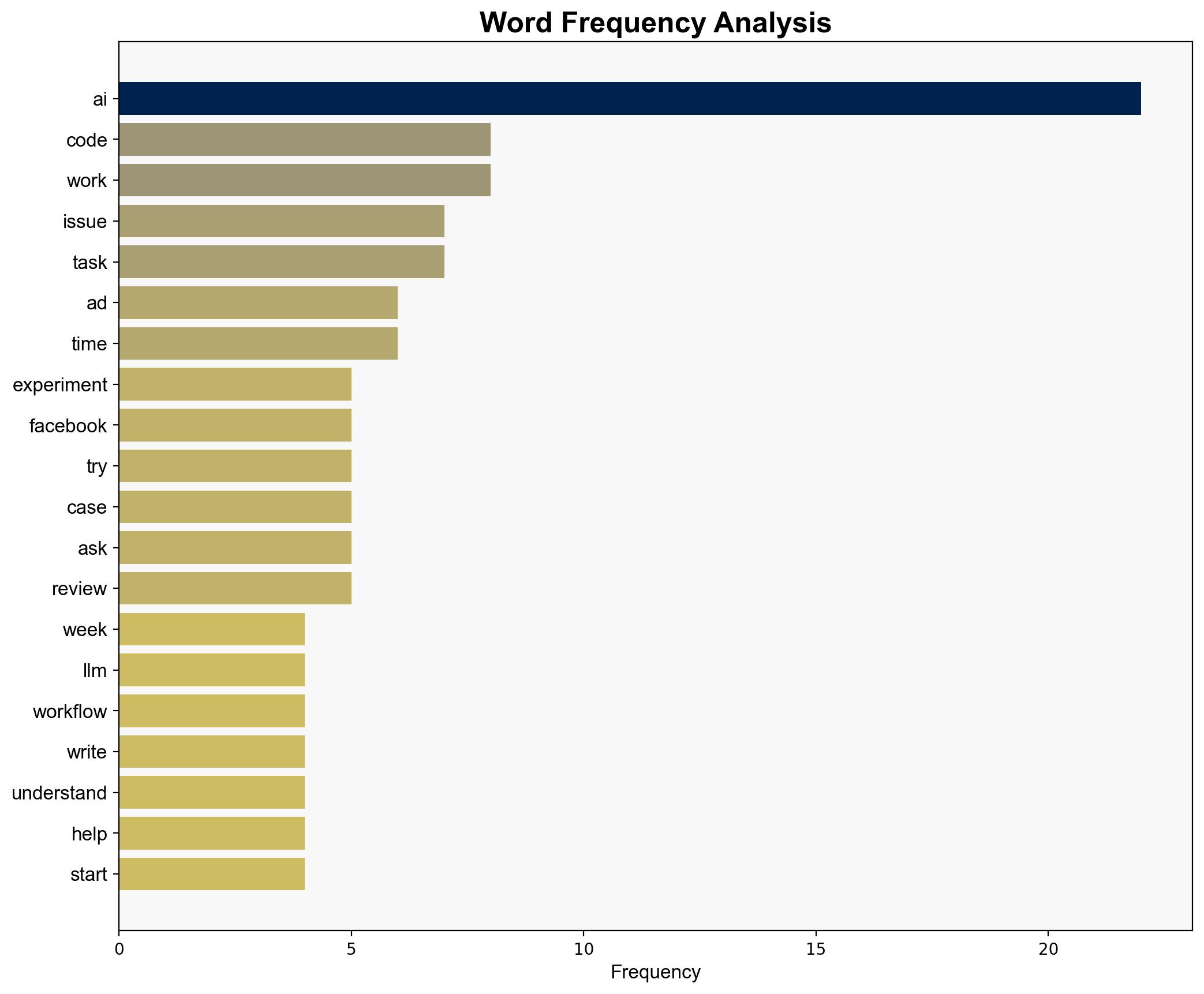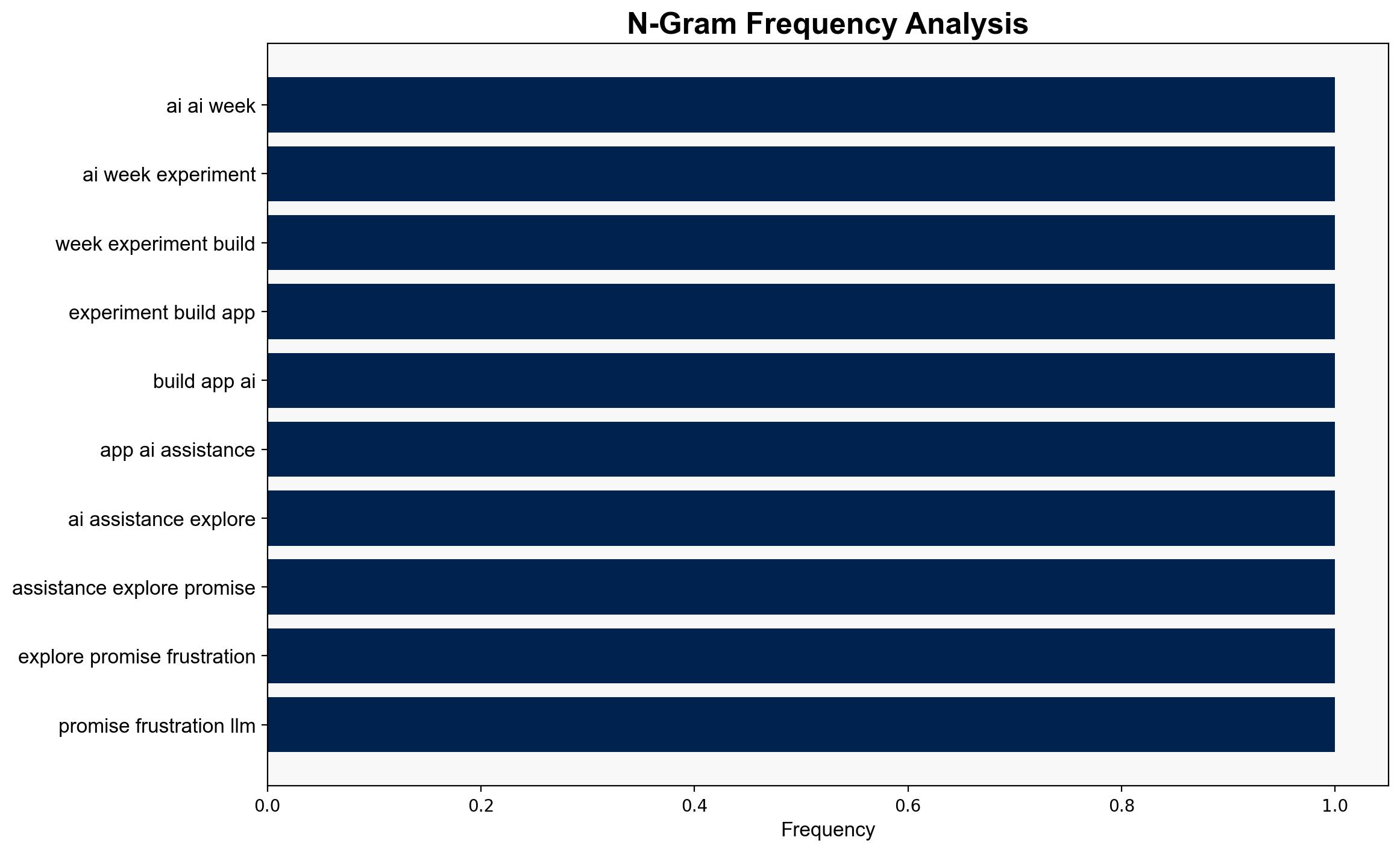To AI or Not to AI – Antropia.studio
Published on: 2025-09-29
Intelligence Report: To AI or Not to AI – Antropia.studio
1. BLUF (Bottom Line Up Front)
The analysis suggests a moderate confidence level that the integration of AI into development workflows, as explored by Antropia.studio, faces significant challenges due to inherent limitations in current AI capabilities and user expectations. The most supported hypothesis is that while AI can enhance certain aspects of development, it is not yet a comprehensive solution for complex tasks. It is recommended to approach AI integration incrementally, focusing on specific, well-defined tasks where AI has proven effective.
2. Competing Hypotheses
1. **Hypothesis A**: AI can significantly improve development workflows by automating routine tasks and providing rapid solutions to complex problems.
– **Supporting Evidence**: The use of AI for defining issues, generating code, and refining requirements suggests potential efficiency gains.
– **Contradictory Evidence**: Persistent frustration and the need for manual intervention indicate limitations in AI’s current capabilities.
2. **Hypothesis B**: The current state of AI is insufficient for handling complex, nuanced tasks in development workflows, leading to inefficiencies and user frustration.
– **Supporting Evidence**: The experiment’s outcome, highlighting issues with context understanding, task completion, and maintainability, supports this view.
– **Contradictory Evidence**: AI’s ability to assist in specific tasks, such as code generation, shows potential for improvement with further refinement.
3. Key Assumptions and Red Flags
– **Assumptions**: It is assumed that AI’s current limitations are primarily technical and can be overcome with further development. There is also an assumption that user expectations align with AI’s capabilities.
– **Red Flags**: The experiment’s frustration and lack of significant improvement suggest a potential overestimation of AI’s current capabilities. The reliance on AI without sufficient human oversight could lead to suboptimal outcomes.
4. Implications and Strategic Risks
The integration of AI into development workflows carries the risk of over-reliance on technology that may not yet be fully reliable. This could lead to inefficiencies, increased costs, and potential security vulnerabilities if AI-generated code is not thoroughly vetted. The psychological impact on developers, who may feel frustrated or disillusioned, could also affect productivity and morale.
5. Recommendations and Outlook
- **Incremental Integration**: Focus on integrating AI into specific, well-defined tasks where it has demonstrated effectiveness.
- **User Training**: Provide training to developers on effectively leveraging AI tools, emphasizing the importance of human oversight.
- **Scenario-Based Projections**:
– **Best Case**: AI tools improve, leading to enhanced productivity and reduced workload for developers.
– **Worst Case**: Continued reliance on underperforming AI leads to inefficiencies and security risks.
– **Most Likely**: Gradual improvement in AI capabilities, with incremental benefits realized over time.
6. Key Individuals and Entities
– Bernardo (mentioned as a collaborator in the experiment)
7. Thematic Tags
technology integration, AI development, workflow optimization, user experience





